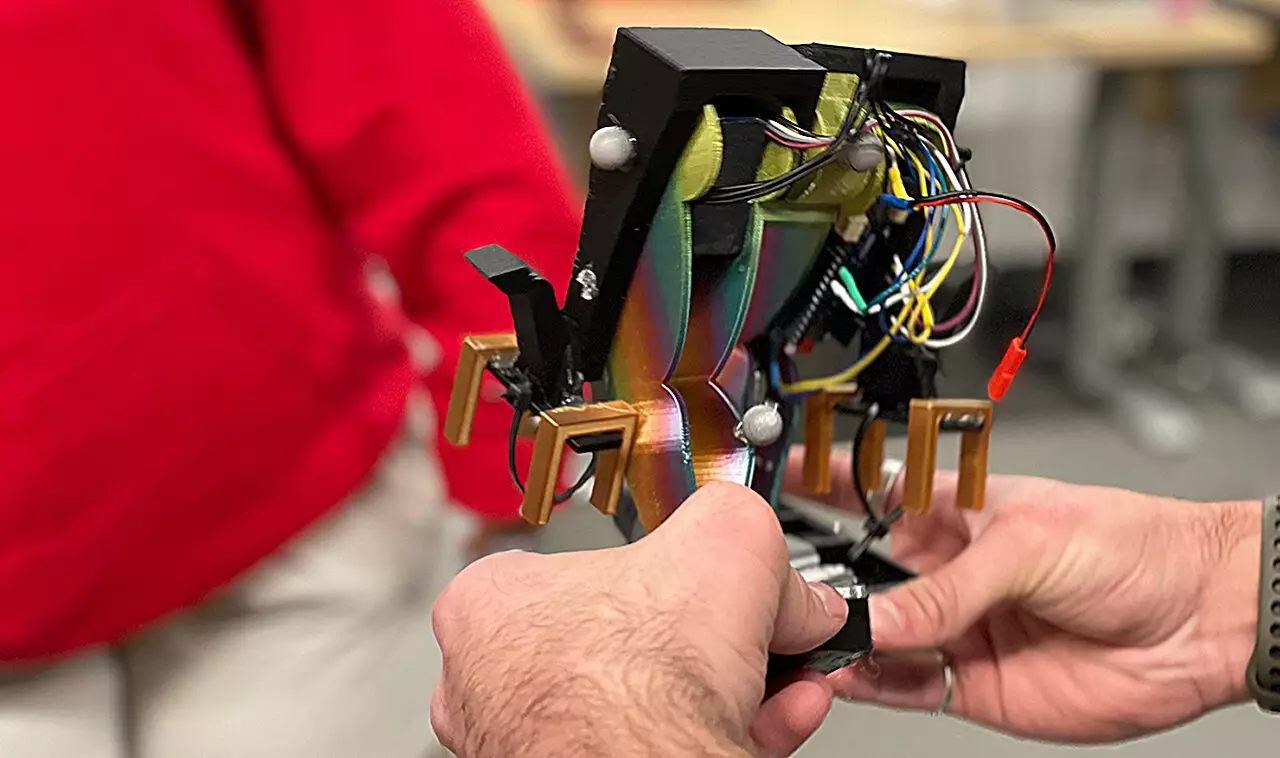Small robots have long been hailed as essential tools for exploring and inspecting confined spaces. Their ability to carefully navigate obstacles and reach areas that larger robots cannot access has proven invaluable in various scenarios, from machinery inspection to search and rescue missions in disaster-stricken environments. However, the creation of small robots that are capable of self-steering and carrying their power sources has posed significant challenges due to their size limitations.
In a groundbreaking breakthrough, a team of researchers led by mechanical engineering experts, Aaron Johnson and Sarah Bergbreiter, have revolutionized the field with the creation of “Mugatu.” This innovative steerable bipedal robot distinguishes itself by containing only a single motor while remaining self-contained and self-starting. Furthermore, Mugatu showcases open-loop stability in its gait and possesses controlled left, right, and straight steering – a feat previously unachieved in small robotic technology.
The team’s initial focus was to simplify the walking mechanism of robots as much as possible, ultimately leading to the creation of Mugatu. James Kyle, a recent mechanical engineering graduate and the first author of the project, explains, “Once we understand how scaling affects locomotion, it can be extremely useful for taking something that already exists and scaling it up or down to do things like fit through smaller pipes or carry more load.” This newfound understanding of locomotion scalability holds immense potential for future applications across various industries.
The development of Mugatu also highlights the invaluable contribution of upcoming talents in the field of robotics. Kendall Hart, an undergraduate mechanical engineering student, played a pivotal role in implementing the robot’s current sensor. Through this project, Hart not only applied the knowledge gained in the classroom but also honed his debugging skills, gaining confidence in tackling challenges independently. This project exemplifies the power of practical application in nurturing young talents and preparing them for real-world problem-solving.
Dubbed “The LEGO Project,” the team aspires to further refine their walkers to the size of LEGO blocks. While acknowledging the complexity of downsizing mechanisms and the subsequent mechanical changes, the team remains optimistic about this ambitious goal. Hart emphasizes the project’s uniqueness and its potential impact on the robotics community: “It’s going to take a while because the mechanics of everything changes as you start down-sizing. But what makes the project so special…”
The drastic simplification achieved in Mugatu’s design, combined with its single degree of freedom, represents a major step towards developing highly efficient small robots. The potential of such robots lies in their ability to perform complex tasks with minimal resources, thus expanding their range of applications exponentially. By pushing the boundaries of what is perceived as possible in small robotic technology, the Mugatu project sets a new standard for innovation and creates exciting possibilities for the future.
The collaborative effort behind this groundbreaking project has brought together a team of individuals with diverse skill sets and expertise. The team includes James Kyle, Justin Y. Kim, Kendall Hart, Sarah Bergbreiter, and Aaron Johnson. Their collective dedication and passion for advancing small robotic technology have yielded remarkable results, pushing the boundaries of innovation in the field.
The development of Mugatu marks a pivotal moment in small robotic technology. Through its simplified design and groundbreaking capabilities, this steerable bipedal robot represents a significant stride towards highly efficient small robots. The contributions of talented individuals and the collaborative efforts of the research team have propelled the project forward, offering a glimpse into a future where small robots can navigate and accomplish exceptional tasks in confined spaces. As the field of robotics continues to evolve and push boundaries, projects like Mugatu inspire further exploration and innovation, creating endless possibilities for robotics in various industries.



Leave a Reply